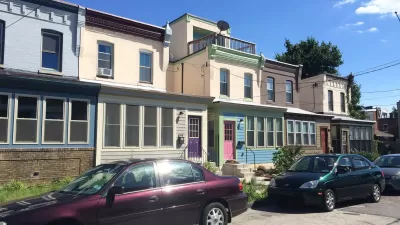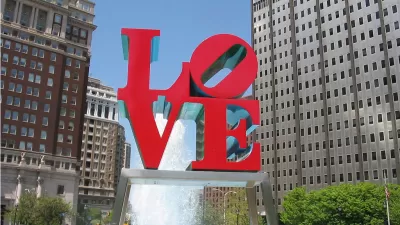Architecture Critic Inga Saffron decries the development proposal making progress through the approval process in Philadelphia—a large, glassy residential building that would encroach on the tiny serenity of the Rodin Museum.
"Won't someone in City Hall please come to the rescue of this Philadelphia treasure?" is the plea of a recent column by Inga Saffron in the Philadelphia Inquirer. The treasure she refers to is the Rodin Museum—a tiny temple on Philadelphia's parkway, where a development proposal for an adjacent parcel threatens to rob the site of its effect.
According to Saffron, "[the] proposal would dramatically alter the experience by cutting off the northern third of the block. The Rodin would no longer be a building in space. It would appear visually jammed on a smaller, less serene, less countrified site."
If approved, the project will require upzoning, which is where Saffron suggests the city can leverage the development proposal to protect the Rodin Museum. "Of course, that doesn't mean the city has to be the project's enabler. It requires a raft of permits before it can be built, including a substantial zoning upgrade, from a rowhouse category to CMX-4, which allows dense, multistory development." She adds, "[some] say the city can't control the aesthetics of its buildings, but a zoning bill is a big ask."
Saffron provides a lot more detail about the zoning and political context for the development proposal. She also presents an alternative building typology that, according to her estimation, would work better for the adjacent parcel.
FULL STORY: Changing Skyline: Mediocrity and a masterpiece

Planetizen Federal Action Tracker
A weekly monitor of how Trump’s orders and actions are impacting planners and planning in America.

Maui's Vacation Rental Debate Turns Ugly
Verbal attacks, misinformation campaigns and fistfights plague a high-stakes debate to convert thousands of vacation rentals into long-term housing.

Restaurant Patios Were a Pandemic Win — Why Were They so Hard to Keep?
Social distancing requirements and changes in travel patterns prompted cities to pilot new uses for street and sidewalk space. Then it got complicated.

Charlottesville Temporarily Has No Zoning Code
A judge ordered the Virginia city to throw out its newly revised zoning code, leaving permitting for new development in legal limbo.

In California Battle of Housing vs. Environment, Housing Just Won
A new state law significantly limits the power of CEQA, an environmental review law that served as a powerful tool for blocking new development.

Boulder Eliminates Parking Minimums Citywide
Officials estimate the cost of building a single underground parking space at up to $100,000.
Urban Design for Planners 1: Software Tools
This six-course series explores essential urban design concepts using open source software and equips planners with the tools they need to participate fully in the urban design process.
Planning for Universal Design
Learn the tools for implementing Universal Design in planning regulations.
Heyer Gruel & Associates PA
JM Goldson LLC
Custer County Colorado
City of Camden Redevelopment Agency
City of Astoria
Transportation Research & Education Center (TREC) at Portland State University
Jefferson Parish Government
Camden Redevelopment Agency
City of Claremont





























